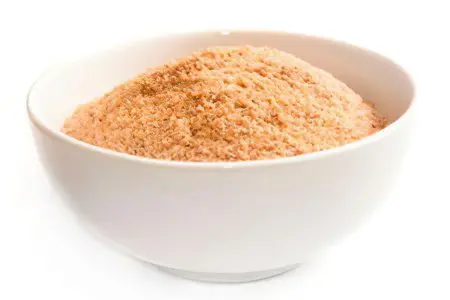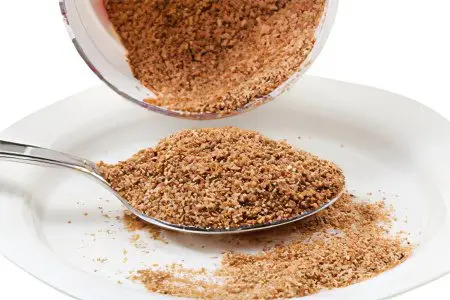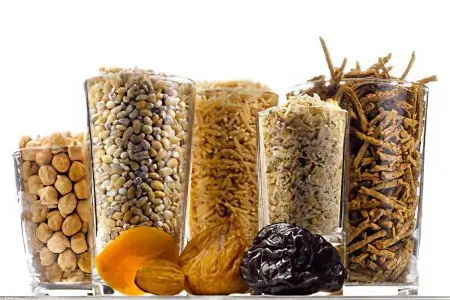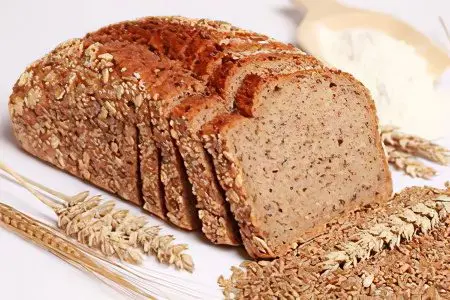
Without exception, doctors advise people to eat foods that contain a sufficient amount of dietary fiber. This is necessary to maintain the normal functioning of the intestines, to cleanse and improve it. Fiber is a great product to combat constipation.
Coarse dietary fiber helps to lower blood cholesterol levels, enhances bile production, reduces the likelihood of developing serious diseases, including atherosclerotic vascular damage, diabetes mellitus, intestinal cancer, and heart pathologies. It is recommended to introduce fiber into your diet for people suffering from overweight. You won’t be able to lose weight without it. Foods rich in fiber can reduce appetite, as they retain a feeling of fullness for a long time.
What it is?

Fiber is nothing more than complex carbohydrates that fill the voids in the fibers of plant cell walls. Fiber does not dissolve in water, but is able to absorb large volumes of it and swell. It is broken down only in the large intestine.
It is the ability of fiber to increase in size and not be digested under the “attack” of the enzymatic juices of the stomach and intestines that are its main features.
Having absorbed water, fiber will pass through the entire gastrointestinal tract, cleaning its walls from undigested food debris. The natural contractions of the intestines will be strengthened, and its villi cleaned of deposits will begin to work as expected. This will allow the body to get the maximum benefit from food, being saturated with vitamins and trace elements.
Be sure to include foods with fiber in your diet for those people who want to lose weight. Such food has a minimum content of kilocalories, and also contributes to long-term saturation. Hunger will not bother you for a long time, because swollen dietary fibers move slowly through the digestive tract, absorbing all the harm that has been accumulated earlier.
Types

The source of fiber are plant products.
There are several types of dietary fiber, including:
Soluble. It is present in oatmeal, flaxseed, apples, orange and red vegetables, citrus fruits and legumes. After contact with liquid, such fibers increase in volume and become jelly-like. Swelling, they fill the entire stomach. Substances that represent soluble fiber are inulin and pectin. This also includes resins, gums and mucus. They are kind of binding components.
Insoluble is found in vegetables and fruits (mostly in their skins), in brown rice, in cereals and bran, in seeds and nuts. It has a spongy texture and increases in size when interacting with water. Insoluble fiber is represented by substances such as: cellulose, hemicellulose, lignins. These fibers cannot be digested by the body.
It is necessary to dwell in more detail on the main types of fiber and the products in which it is contained:
Camedin can be obtained from oatmeal and dried beans.
Pectin is rich in apples, carrots, citrus fruits, cabbage (white and cauliflower), dried peas, green beans, strawberries, potatoes, strawberries, fresh fruit drinks. Pectin, like gums, affects the absorption of food in the stomach and small intestine. They react with bile acids and reduce the consumption of fat by the cells of the body. This helps lower blood cholesterol levels. Food stays longer in the stomach, and the intestines are enveloped from the inside, which reduces the rate of absorption of sugars. This is true for people with diabetes, as it allows you to reduce the dose of insulin administered.
Cellulose is present in bran, cabbage (broccoli and Brussels sprouts) and baby peas, wheat flour, waxy and green beans, cucumber skins, apples, carrots and peppers.
Hemicellulose can be found in bran, cereals, whole grains, beets, mustard greens, and cabbage. Cellulose, like hemicellulose, has the ability to absorb water, relieving pressure from the colon. Fecal masses easily and quickly pass through the intestine, which allows you to get rid of constipation. Eating foods with fiber is an excellent prevention of diseases such as: hemorrhoids, cancer and varicose veins of the large intestine, diverticulosis, spasmodic colitis.
Lignin can be found in bran, cereals and stale vegetables. The fact is that over time, the level of this substance in vegetables increases compared to the level of lignin in fresh products. This type of fiber is present in strawberries, peas, green legumes and radishes. Lignin reduces the absorption of other fibers, has the ability to bind to bile. Thanks to these properties, there is a decrease in the level of cholesterol in the blood and the process of moving food masses through the intestines is accelerated.
Pharmaceutical fiber is presented in granules and powder. It can be consumed as an independent food product, or added to dishes. If a person eats food with fiber, he needs to drink enough water. Its volume should be at least 2,5 liters per day.
10 foods that are good for bowel function

Wholemeal bread. This bread is a source of fiber, which is available to everyone. In addition, it contains many useful substances represented by vitamins and trace elements. To get enough fiber, you need to choose bread made from wholemeal flour. Rye bread, which has a low calorie content and is rich in fiber, has the maximum benefit. Its use in food allows you to reduce the level of cholesterol in the blood, as well as clean the intestines. Therefore, it is not surprising that such bread is included in a wide variety of therapeutic diets. Two slices of rye bread a day are enough to bring the digestive processes back to normal.
Bran and cereals. It is enough to eat one serving of cereals with pieces of fruit to provide your body with 14 g of pure fiber. A saucer with oatmeal covers the daily human need for dietary fiber by 25%. Oatmeal contains starch, but it is slowly absorbed by the body, so it does not harm it. This allows you to permanently get rid of the feeling of hunger.
Lentils and other legumes. By eating a serving of lentils, a person will provide himself with 16 grams of fiber. Such food is a source of iron and zinc, it does not lead to the accumulation of toxins in the body. All other legumes are also not devoid of dietary fiber. A serving of black beans provides 15 g of fiber, and a serving of beans provides 13 g. In general, legumes are considered a healthy food, so it is recommended to include them in dietary meal plans. However, you need to consume them in small portions so as not to provoke flatulence.
Strawberries, blueberries, gooseberries and raspberries. These berries contain a lot of fiber. One serving of raspberries is enough to saturate the body with 8 g of dietary fiber. At the same time, the calorie content of such a dish will not exceed 60 kcal.
Avocado. One medium-sized fruit has 12 g of fiber. Its use in food allows you to normalize the intestinal microflora, increase peristalsis, get rid of constipation.
Nuts. 30 g of almonds contain 161 kcal, but despite the high calorie content, this product contains 13 g of useful fatty acids, as well as 3,4 g of fiber, which covers the daily requirement of the body by 14%. Pistachios are less caloric, but no less useful. In order to reduce the level of cholesterol in the blood by 8,5% and increase the elasticity of the arteries, you need to eat about 80 g of these nuts every day. You can eat them in their pure form or add them to porridge, yogurt, sauces and pastries.
Pear is a fruit that contains about 5 g of fiber. The fruits are high in fructose but low in glucose. Therefore, it can be included in your menu for people with pancreatic diseases.
Flax-seed contains both soluble and insoluble fiber. A tablespoon of seeds contains 2,8 g of these beneficial dietary fibers. Flaxseed oil is used as a laxative, which lowers blood cholesterol levels. Its reception allows you to envelop the walls of the stomach and intestines, which reduces the symptoms of peptic ulcer, gastritis and other inflammations. Food masses move faster through the digestive tract, do not linger in them, which is important for people with obesity and constipation.
Dried fruits. Prunes are a source of fiber. AT ? a glass of it contains 3,8 g. As a snack between main meals, it is good to use other dried fruits, for example, apricots, figs, raisins, dates. We should not forget that they are all high in calories, so you need to use them in moderation.
Green vegetables. They contain iron, beta-carotene, insoluble fiber. A serving of turnip, beet or spinach leaves contains 4-5 g of fiber. There is also a lot of it in black radish, broccoli, bell pepper, cauliflower, zucchini, kohlrabi, celery, carrots, cucumbers, asparagus.
[Video] 5 reasons to add fiber to your weight loss diet:









